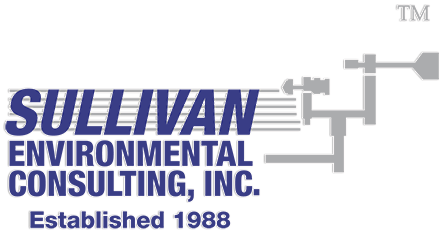- info@sullivan-environmental.com
- 1900 Elkin Street, Suite 200, Alexandria VA 22308
- (703) 780-4580
- Home
- /
- Air Exposure Assessment
We’re Experts in Air Exposure Assessment
Air exposure assessment, risk assessment, and risk management are the three major components of assessing risks from exposure to air pollutants. At Sullivan Environmental, we have been at the forefront of developing methods for air exposure assessment and have conducted research for the U.S. EPA and industrial clients aimed at identifying exposures from specific source categories.
Risk Assessment and Risk Management
Risk assessment involves the review of average and worst-case exposures in relation to cancer potency scores and relative to threshold limit values for non-cancer endpoints. Through the identification of the upper-bound risks by pollutant and source category, the priority sources and pollutants for subsequent control analyses can be identified. Risk management involves evaluating the most cost-effective and practical ways to reduce risk (average exposures and maximum exposures). Sullivan Environmental Consulting has been involved in all of these areas with air exposure assessment as the primary area of expertise.
Acute Exposures
Exposures associated with averaging times of 24 hours or less can be dominated by a few averaging periods per year that have emission rates that greatly exceed routine conditions. Examples include:
- Batch operations at chemical facilities
- Pesticide applications into agricultural fields
- Dump stack emissions from hazardous waste incinerators
- Conditions at industrial facilities
In all cases, there is a major limitation in terms of applying routine Gaussian dispersion models, i.e., how to define meteorological conditions when the emissions event of concern takes place. There are two major options, as follows:
- The most simplistic way, which is only appropriate as a default, is to assume that the worst-case emission event occurs every hour of the year. If the exposure assessment is screened on this basis, and there are no difficulties in meeting the exposure guidelines or standards, there is no need to refine the analysis any further. On the other hand, if the imposition of such conservative assumptions would result in additional controls or permit restrictions, the next appropriate step is to account for the variability in emission rates by using a Monte Carlo treatment.
- The TOXST model was developed by Sullivan Environmental for the chemical industry and was later adopted by EPA. This model provides a preferred option to refine the estimation of acute exposures. It provides the ability to simulate 200 to 2,000 years of operation to produce distributions of concentrations for receptors around the source. TOXST can account for batch emissions, mutually exclusive sources, and multiple averaging times up to 24 hours. Although TOXST is not directly supported by the current EPA dispersion model, AERMOD, the principles used in TOXST can be applied by Sullivan Environmental in terms of pre-processing and post-processing to meet current air quality modeling requirements consistent with the algorithms in the TOXST model.
Chronic Exposures
The goals of assessment are similar if the exposure study is a threshold or non-threshold evaluation. Locations in close proximity to key sources need to be modeled with as much specificity as possible in terms of the release characteristics of nearby sources. Simplifying assumptions in terms of spatial aggregation of sources, treatment of building down wash, and other site-specific features usually become of much greater significance as the distance between the source and receptor is decreased.
The diurnal features of the sources can be important in some cases. Operations that are concentrated in the daytime need to be modeled accordingly because of the strong bias towards restrictive dispersion conditions that produce worst-case conditions for near-ground sources during many nighttime periods. Especially for non-cancer endpoints with thresholds effects, it is essential to add background concentrations to the modeled concentrations for sources within the modeling domain.
Finally, if measured air quality data are available, model performance testing provides an opportunity to identify the strengths and weaknesses in the emissions and modeling treatments and the potential to improve model performance. Testing on this basis is recommended whenever sufficient measured air quality data or soil concentration data (to evaluate performance for modeled deposition) are available. The above features were factored into the EPA Air Quality Integrated Management System (AIMS) developed by Sullivan Environmental and installed in the Baltimore metropolitan area in the mid-1990s as a prototype system for managing air quality at the urban-scale of analysis. This system also was used as one of the three urban air toxic studies conducted by the EPA as required by the Clean Air Act of 1990, i.e. The Baltimore Air Toxics Study. A system such as AIMS offers the potential to provide efficient air quality management in the future.
Emergency Release
One of the most serious concerns regarding toxic air pollutant exposures is the consequence of an emergency release. For example, a chlorine discharge from the rupture of a major storage tank can produce lethal effects at distances far from the point of release. Adverse health effects can be observed miles from the point of release. Sullivan Environmental has developed a modeling system for air quality emergencies, RISKMANpro ™, which computes sources terms (the temperature of the release, gas or liquid fractions, and emission rates) to support dispersion modeling of dense gas and non-dense gas releases. This system can also be used to estimate the benefits of mitigation measures such as dikes and sheltering of storage tanks within an enclosure. Another feature of RISKMANpro ™ is the option to estimate a range of expected indoor concentrations as a function of time after release, which can be used to assess shelter-in-place versus evacuation options.


Advantages
- At Sullivan Environmental, we are at the forefront of developing methods for air exposure assessment .
- We have conducted research for the U.S. EPA and industrial clients aimed at identifying exposures from specific source categories.
- The senior scientists responsible for managing modeling projects are both certified consulting meteorologists, each with over 40 years of experience.

Benefits
- Air exposure assessment is a primary area of expertise for Sullivan Environmental.
- The senior scientists employed by the firm are experts in air quality and have managed complex modeling projects and legal cases involving air quality and meteorological expert analysis.
- Sullivan Environmental developed systems such as the EPA Air Quality Integrated Management System (AIMS) as a prototype system for managing air quality at the urban-scale of analysis and a modeling system for air quality emergencies, called RISKMANpro ™, which computes sources terms to support dispersion modeling of dense gas and non-dense gas releases.
